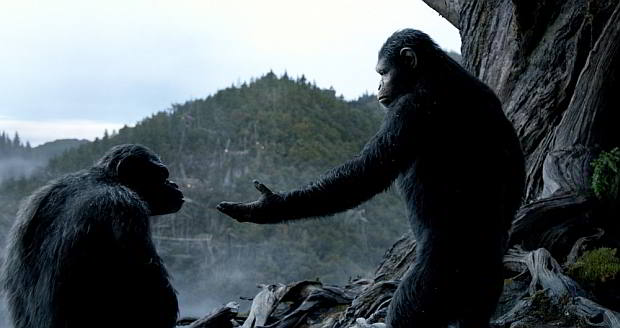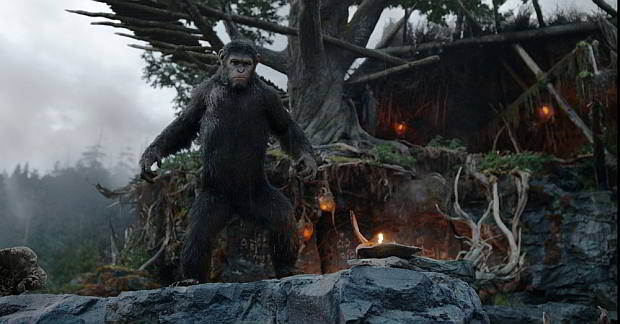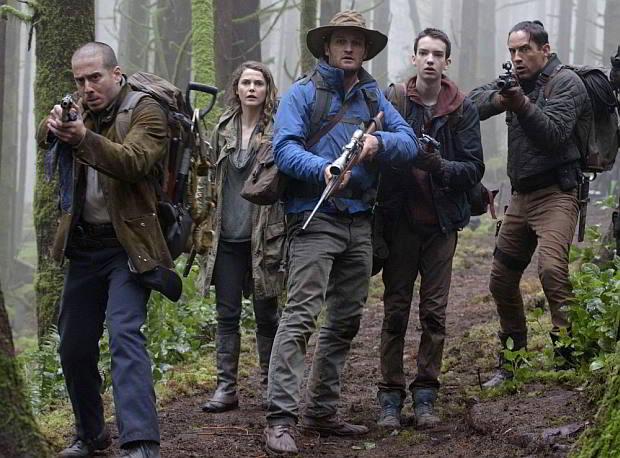 If there is one summer movie that just has to be on your “must-see” list, it is “Dawn of the Planet of the Apes.”
If there is one summer movie that just has to be on your “must-see” list, it is “Dawn of the Planet of the Apes.”
Projecting itself far beyond its original remake of the classic 1968 “Planet of the Apes,” this sequel to the current “Planet of the Apes” timeline is truly something special where now we have a growing nation of genetically evolved apes spread across what was greater San Francisco.
Leading the group is Caesar, who in the first film, “Rise of the Planet of the Apes” escaped from a laboratory and led his mutated simian brethren into California’s redwood forests.
That was then. Flash forward 10 years and 90 percent of the human population has been wiped out from the “simian flu”… and as humanity dwindles, the apes have risen to take over.
It is an amazing plotline, far superior to a race of genetically altered humans who used ESP and telepathy in the silly sequel “Beneath the Planet of the Apes” back in 1970.
Keeping straight the original five “Apes” moves from the late 1960s and 1970s in line, the remake by Tim Burton in 2001 and the current two Apes films would drive anyone a bit “apey” but the current
continuation is an excellent action adventure film.
Motion capture technology has now brought the apes into full vitality that latex and plastic masks placed onto actor’s faces never could 40 years ago.
Directed by Matt Reeves (“Cloverfield”), Dawn is nothing like anything you’ve ever seen before.
Andy Serkis (“The Lord of the Rings”) plays the ape leader Caesar who in the first film was just a common chimpanzee that after being experimented on, can reason and think like any human.
As leader of the ape colony, Caesar is now king of his kind and will brook no interference with the humans who are massing what is left of themselves into an army.
Enter Gary Oldman (“Batman Begins”) as Dryfus, a survivor of the ALV-113 virus that killed his wife and children. With nothing left to live for, his hatred for the apes is a seething cancer that is growing dark inside him. You know that eventually Dryfus and his followers and Caesar and his kinfolk are going to clash and although a normal ape is no match for a .357 Magnum bullet, we are not speaking of any ordinary simian.
Not only can these apes think and speak like any human, they are lightning fast and have none of the compassion we humans possess. Instead these apes are feral and will likewise attack any human in their path.
More to the point, chimpanzees don’t normally ride horses or use sub machine guns.
Special kudos go out to the technical wizards who put “Dawn of the Planet of the Apes” on film, especially to Mr. Serkis who brings an amazing performance in Caesar as the conflicted leader of his “people” that is seeking a lasting peace with the humans but has his own hierarchical conflicts to manage.
As an abstract of the original novel penned by Pierre Boulle, the question remains: Who are the humans and who are the apes? Are we both part of the same or less than half? Is it in our nature as a human (or ape) species to continually wage war until there is nothing left? In the ruins of what was San Francisco and the remnant of human society dwindling by the day, the film also challenges the viewer to silently ask, “Can’t we all just get along”?
Filmed in the lush background of the Campbell River in British Columbia as well as “beauty shots” of San Francisco, “Dawn of the Planet of the Apes” comes in at a solid 130-minute presentation.
Not for the younger set as the screen violence is really a bit much, you too will go “apey” for “Dawn of the Planet of the Apes.”
Questions, comments or travel suggestions, write us at [email protected]





